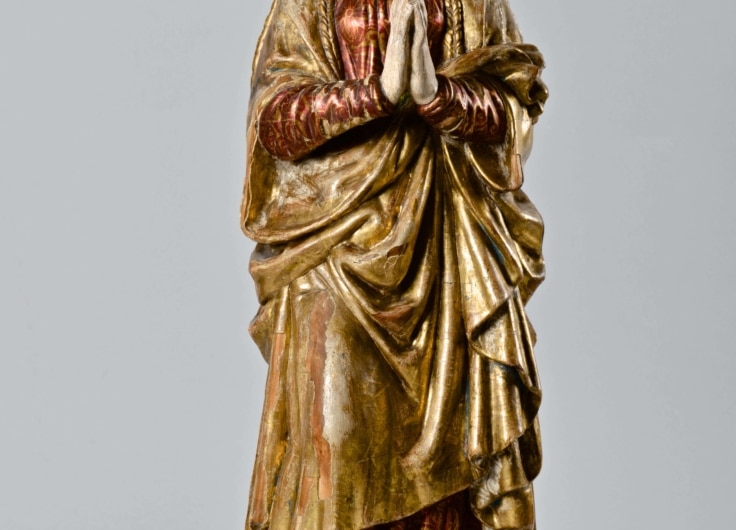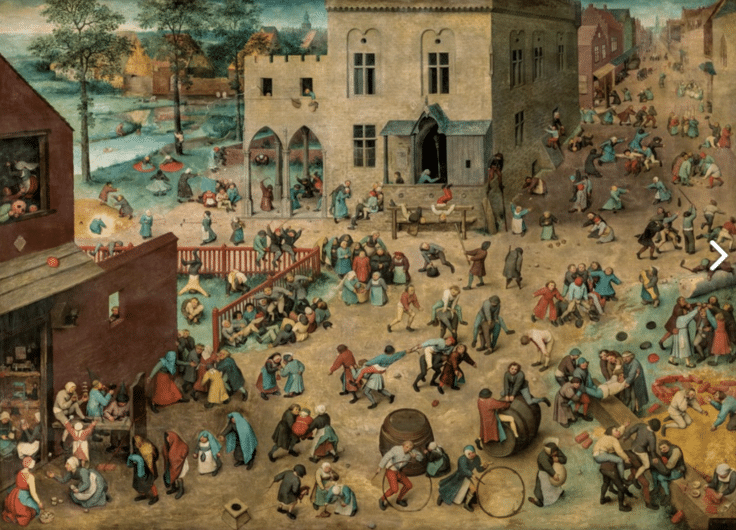Museum Mayer van den Bergh: Home of Bruegel’s ‘Mad Meg’ and Other Masterpieces
Admiring Flemish masters such as Bruegel, outside the big museums, in a domestic setting, is that possible? The answer is yes. Take for example Dulle Griet (Mad Meg), one of the best-known masterpieces by Pieter Bruegel the Elder. After a thorough restoration the painting is now back ‘home’ in Antwerp, where you can admire her in the monumental house of the man who discovered her, Fritz Mayer van den Bergh (1858-1901). And there are more treasures to discover in the museum that was the first ever to be established solely around the existing collection of one person.
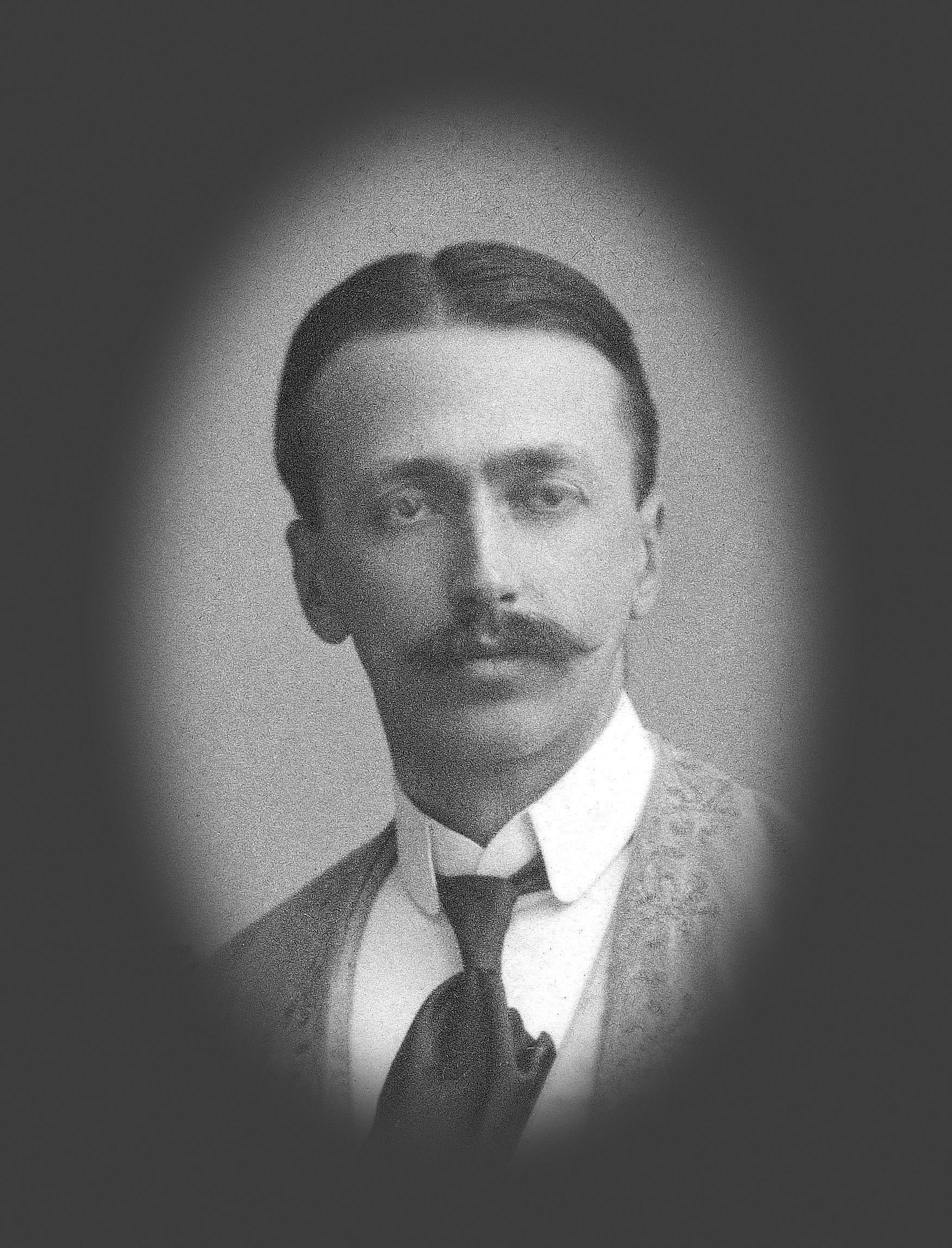 Fritz Mayer van den Bergh
Fritz Mayer van den Bergh© Museum Mayer van den Bergh
Push open the beautiful entrance door and behind the 16th-century façade you instantly find yourself in the homely environment of the famous collector. Or so the engraved stained-glass windows and the monumental stairwell with beautiful wood carvings would have you believe. In fact, this aristocrat’s house is not really 16th-century at all. Moreover, Fritz Mayer (who only later acquired both his noble title and the name of his mother) never lived here. The house was built on the occasion of the World Exhibition of 1894 in Antwerp, when “Oud-Antwerpen” was rebuilt, a 16th-century city district with approximately 70 inhabited houses.
With a passion for art and a thorough knowledge of antiquity, over the years Fritz Mayer van den Bergh assembled an extensive and precious collection, which he hoped to exhibit in a museum. After his early death at the age of 43, his mother Henriette van den Bergh realised her son’s dream by bringing everything together in this remarkable home. Uniquely, the (private) Museum Mayer van den Bergh, which opened in 1904, was the first ever to be established solely around the existing collection of one person. Internationally, this museum is now celebrated alongside other collectors’ museums such as the Musée Jacquemart-André in Paris, the Wallace Collection in London, and the Frick collection in New York.
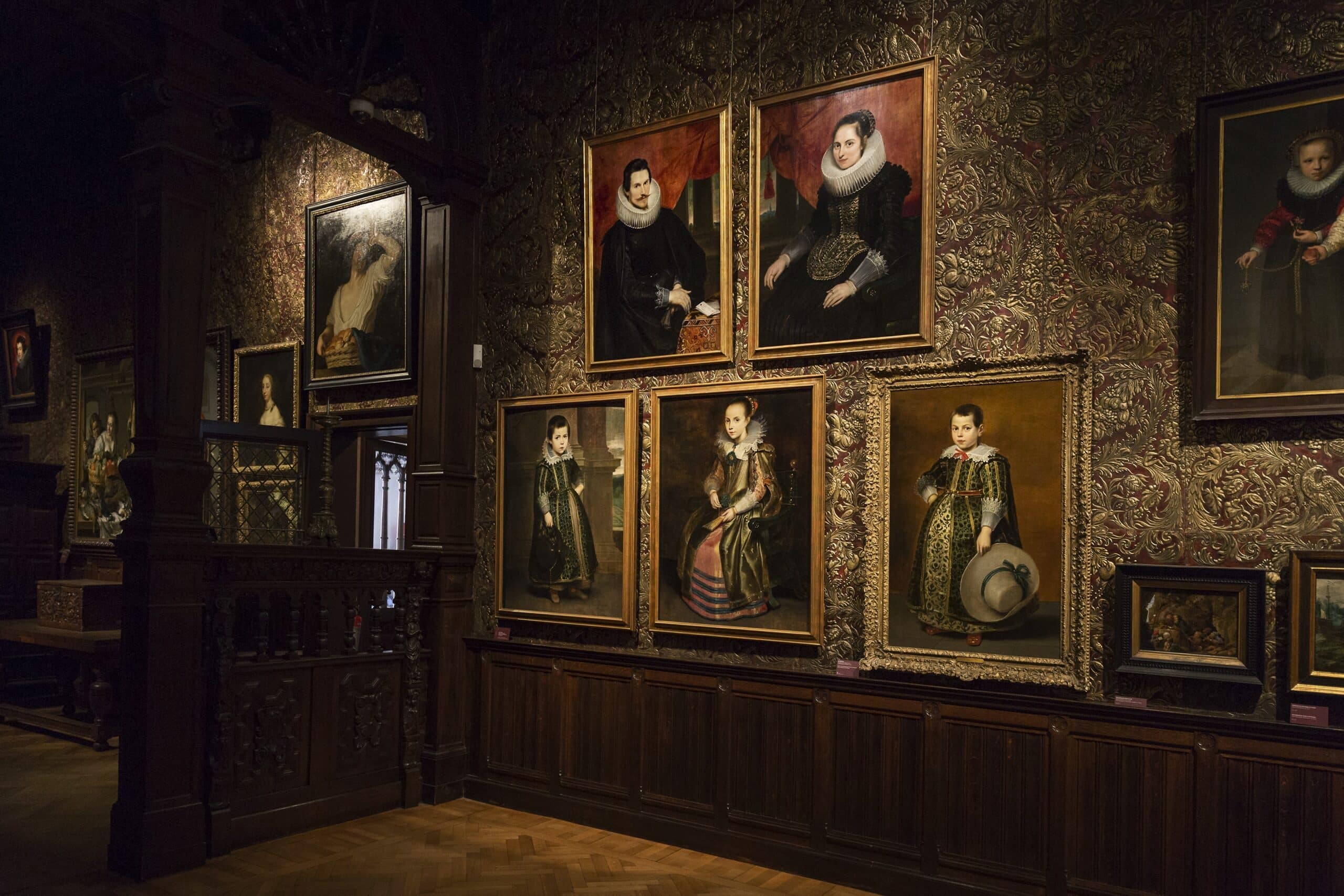 Museum Mayer van den Bergh
Museum Mayer van den Bergh© Ans Brys
Instinct
Fritz Mayer van den Bergh came from a prominent Antwerp family. He left all business affairs to his brother when his father died, so he could go to live with his mother and dedicate himself purely to the collection of art both in the Netherlands and abroad. His interests were wide-ranging, he soon became an expert in textiles, numismatics, and joined important societies.
Mayer van den Bergh developed his connoisseur’s gaze and primarily added to his collection with paintings and sculpture. To his great merit, he had a natural instinct for valuable works, even for what was not ‘in Vogue’ at that time, such as art from the 15th and 16th centuries. In 1898, he whisked away the Micheli collection, which comprised numerous smaller medieval carvings, from under the nose of the Louvre and major museums in Berlin.
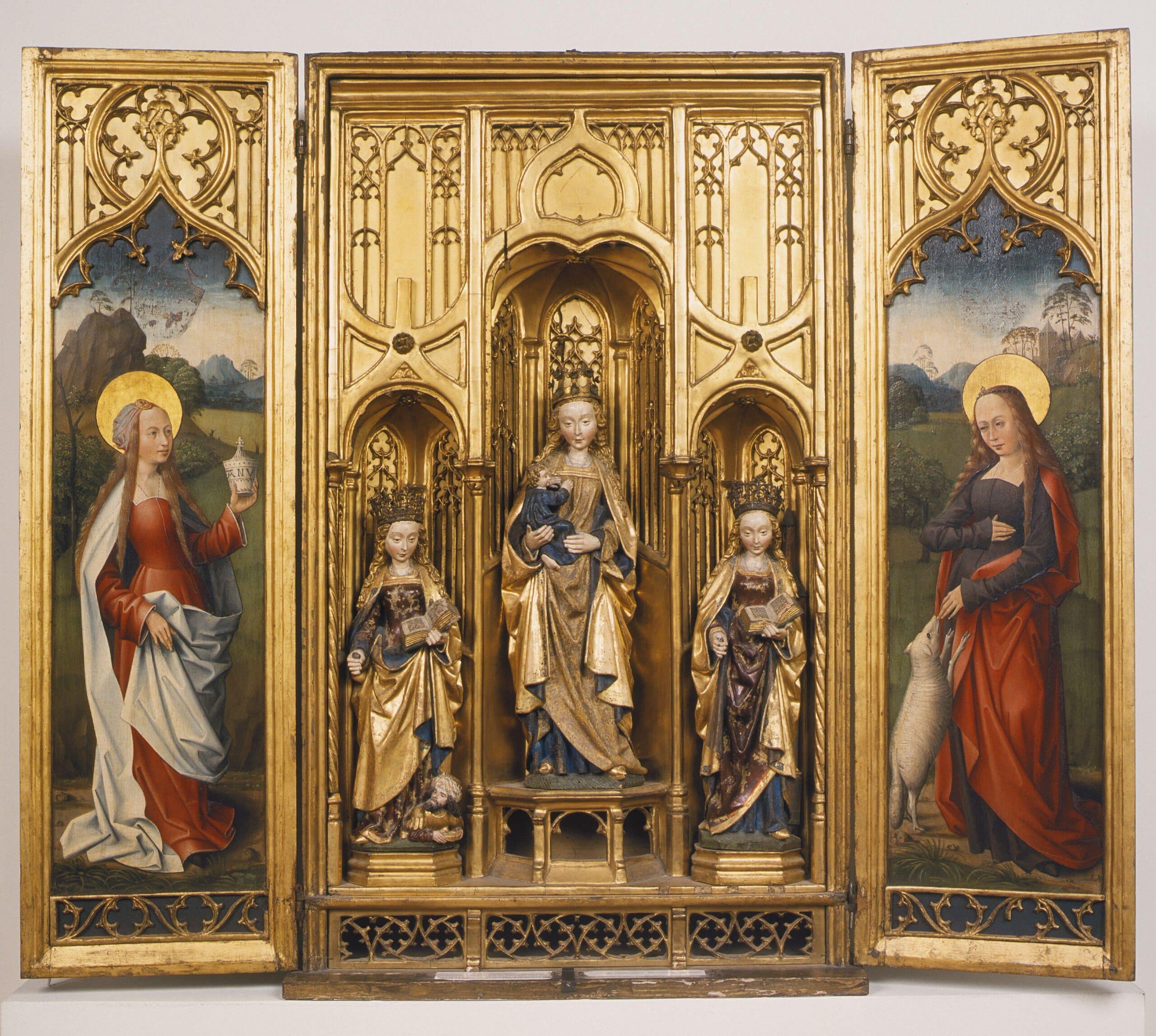 Madonna with child, Catharina, Barbara, Maria Magdalena and Agnes, ca. 1500
Madonna with child, Catharina, Barbara, Maria Magdalena and Agnes, ca. 1500© Museum Mayer van den Bergh
He stood alone in his admiration of the oeuvre of Bruegel – at that time just about an unknown. Also, the works of Pieter ‘the elder’ Bruegel and his sons were often misattributed. Mayer van den Bergh was the first who distinguished them clearly, well before there was any interest for this stylistic period in the Flemish art scene.
Mad Meg
Thanks to a tip-off from a friend, Fritz found out when Mad Meg (1563) came up for auction in Cologne. The connoisseur with a nose for business managed to lay hands on this enigmatic painting for scarcely five hundred old Belgian francs (12 euros now), a bargain even then. Without a doubt, Mad Meg is one of the collection’s flagship pieces. On the upper floor, the work dazzles with its numerous scenes in vivid colours; visitors gravitate towards it. This is a narrative painting in the best Flemish tradition.
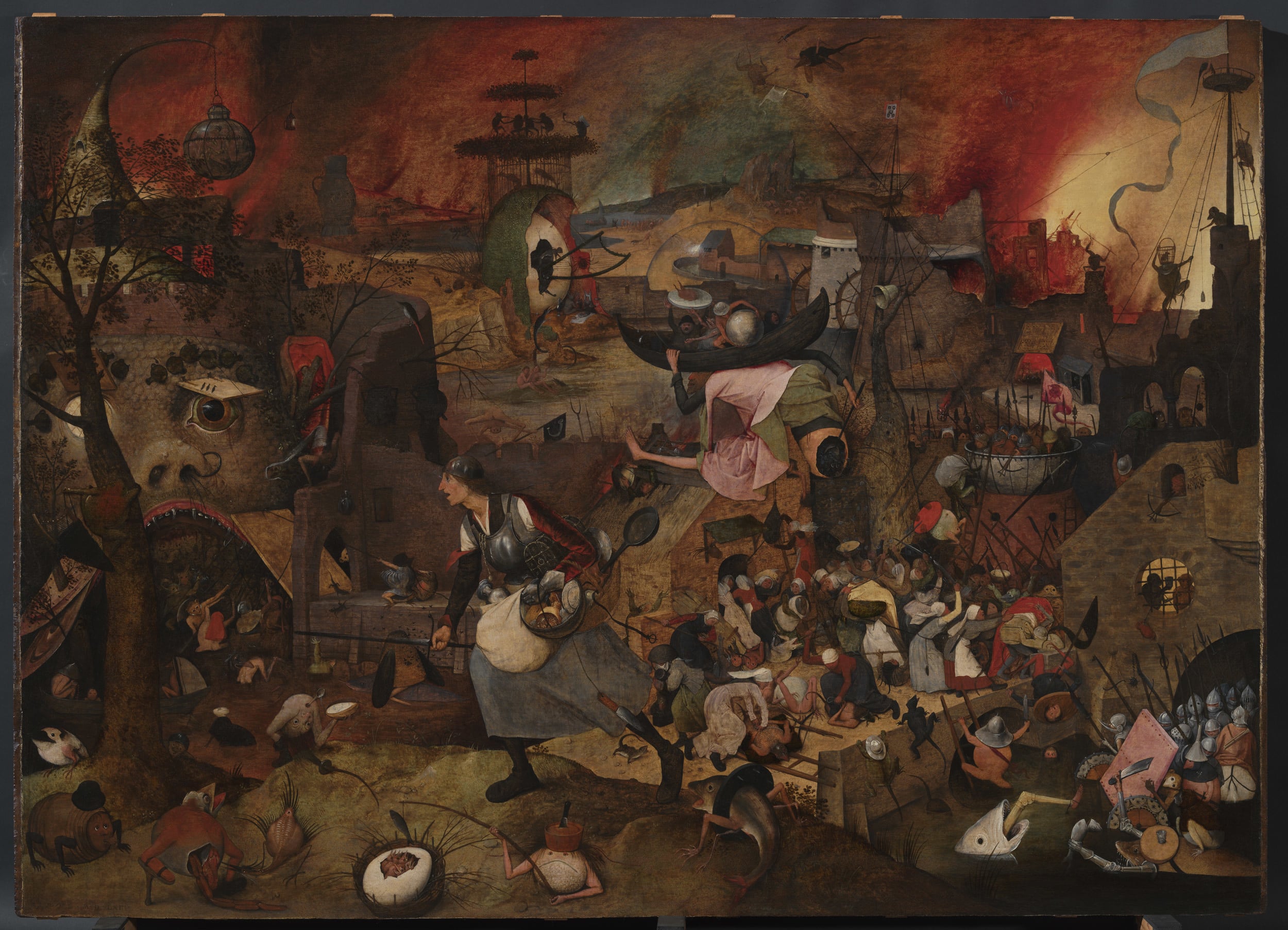 Pieter Bruegel the Elder, Mad Meg, 1563, Museum Mayer van den Bergh, Antwerp
Pieter Bruegel the Elder, Mad Meg, 1563, Museum Mayer van den Bergh, Antwerp© KIK IRPA Brussels
The apocalyptic scene with at centre stage the armoured woman who advances perhaps fiercely or just anxiously, certainly appeals to the imagination. Not least to that of comic book author Willy Vandersteen, whose 1966 Spike & Suzy (Suske en Wiske)-album De Dulle Griet gives the predatory and warlike character a leading role. You can endlessly admire the painting’s eccentric scenes, peer at details of strange creatures between ruins against a burning horizon.
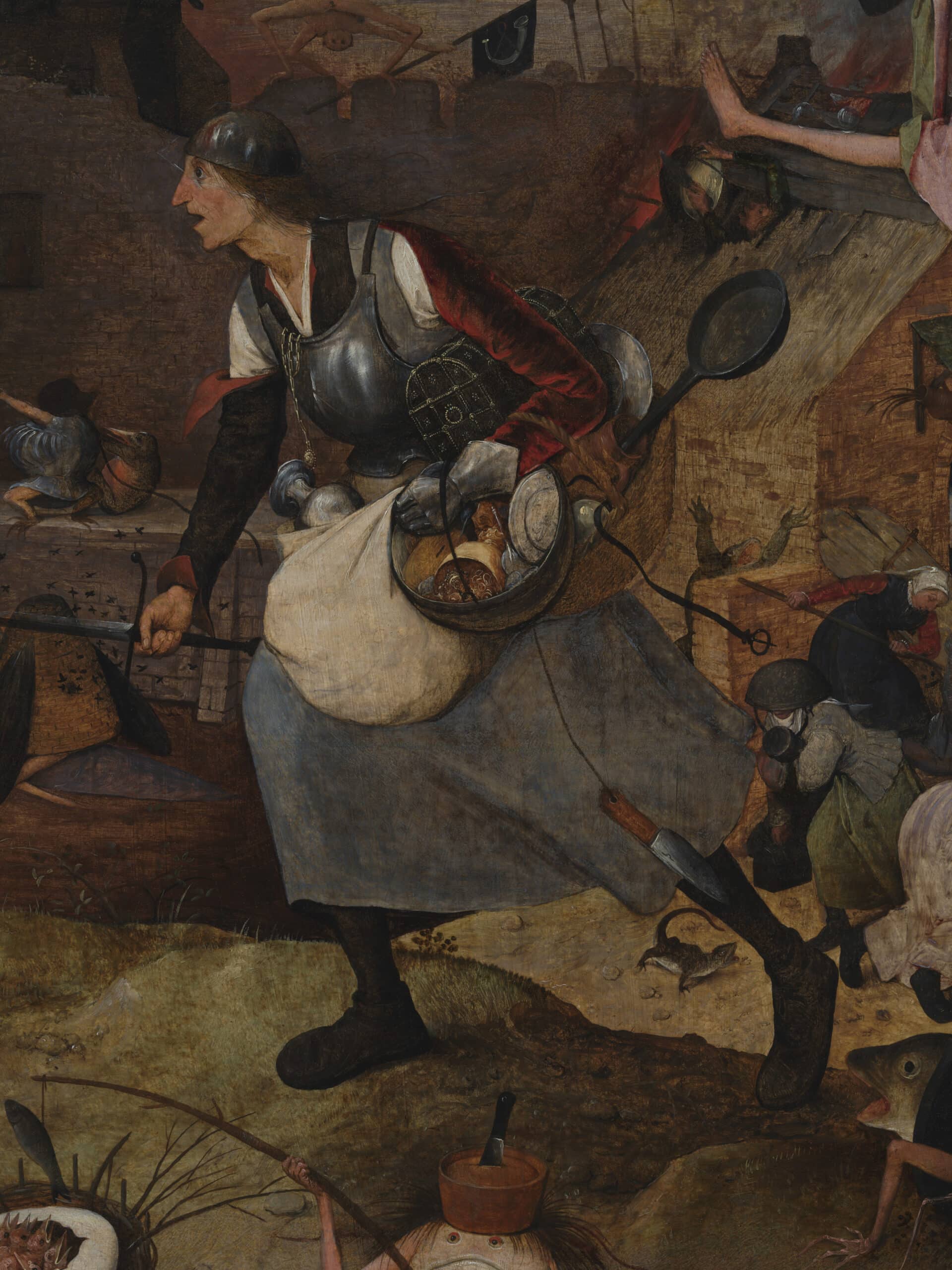 Pieter Bruegel the Elder, detail of Mad Meg, 1563, Museum Mayer van den Bergh, Antwerp
Pieter Bruegel the Elder, detail of Mad Meg, 1563, Museum Mayer van den Bergh, Antwerp© KIK IRPA Brussels
Hieronymus Bosch’s influence is never far off, but in this work, Bruegel has developed a very singular dynamism and style. There are as many interpretations of the painting as there are stories circulating around it. To bring it to life, the museum organised a series of lectures and meetings with authors in March of last year.
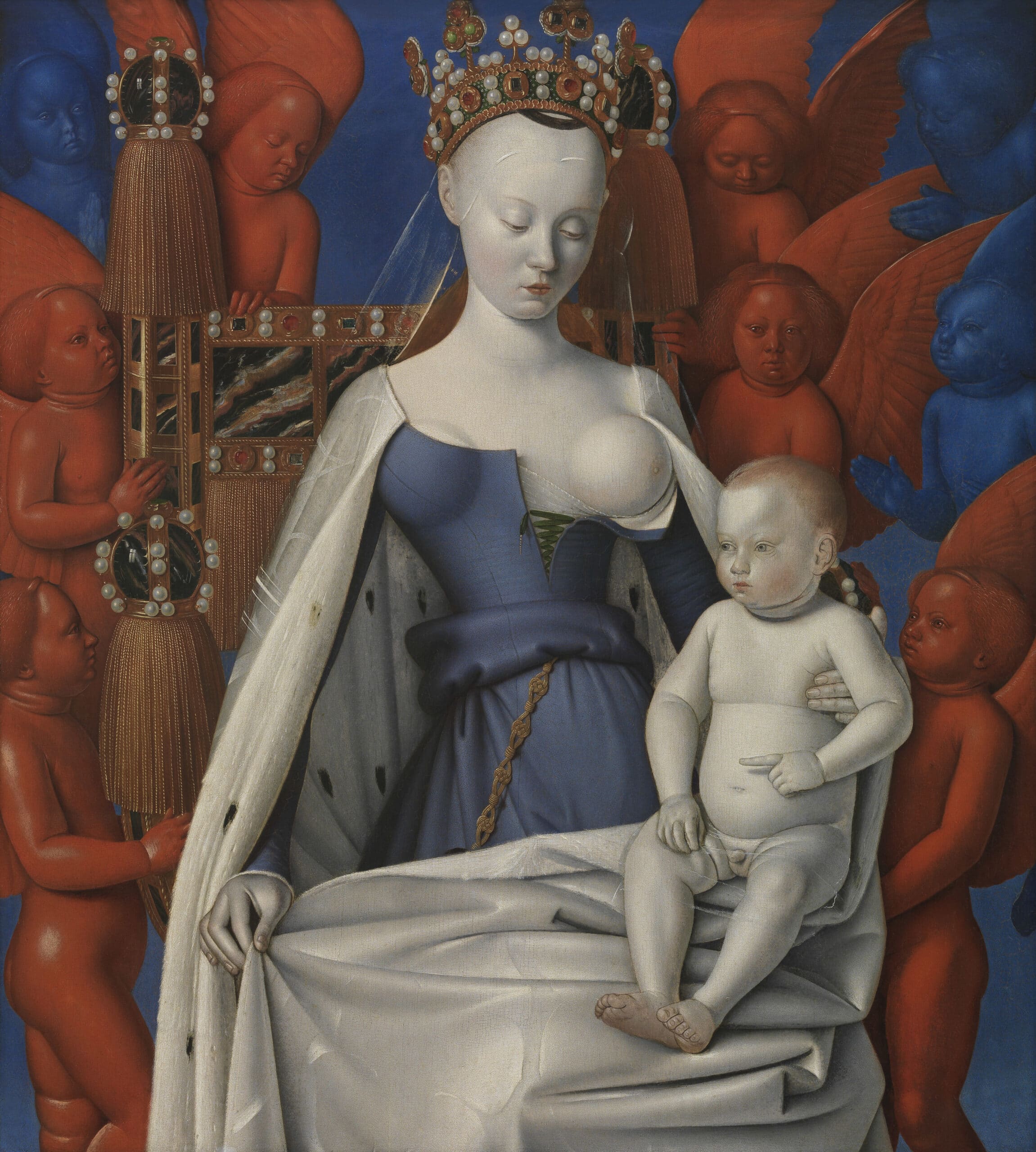 Jean Fouquet, Madonna surrounded by seraphim and cherubim, 1454-1456
Jean Fouquet, Madonna surrounded by seraphim and cherubim, 1454-1456© KMSKA, Lukas-Art in Flanders vzw, photo Hugo Maertens
In autumn 2019, there will also be a temporary exhibition around the highly unusual Madonna by Fouquet, originally brought to Antwerp by Florent van Ertborn, which still looks strikingly modern after more than 500 years. This temporary display will also bring works by Rogier van der Weyden and Gerard David, and aims equally to tell the stories behind the artworks. Whether they were bargains, investments or ingenious finds, Fritz Mayer’s connoisseur’s eye is evident. The same applies to the permanent collection, whose range extends well beyond the works of Bruegel alone.
Masterpieces
Mayer’s collection of sculpture is the second most important in Belgium, after the Royal Museums of Art and History in Brussels. Altarpieces, everyday objects, sculptures in alabaster and marble, and numerous paintings – ranging from still lifes to landscapes, portraits, religious and folk scenes by Flemish masters – the abundance of artefacts is impressive. Owing to lack of space, however, not everything can be exhibited. In addition, certain works, such as the unrivalled Breviarium, are too fragile to put on display. This unique manuscript filled with beautiful miniatures, which was probably produced for the Portuguese king ca. 1500, has been excellently preserved. This book of hours was actually named after the Mayer van den Bergh museum, and that is also where one can browse the digitised version.
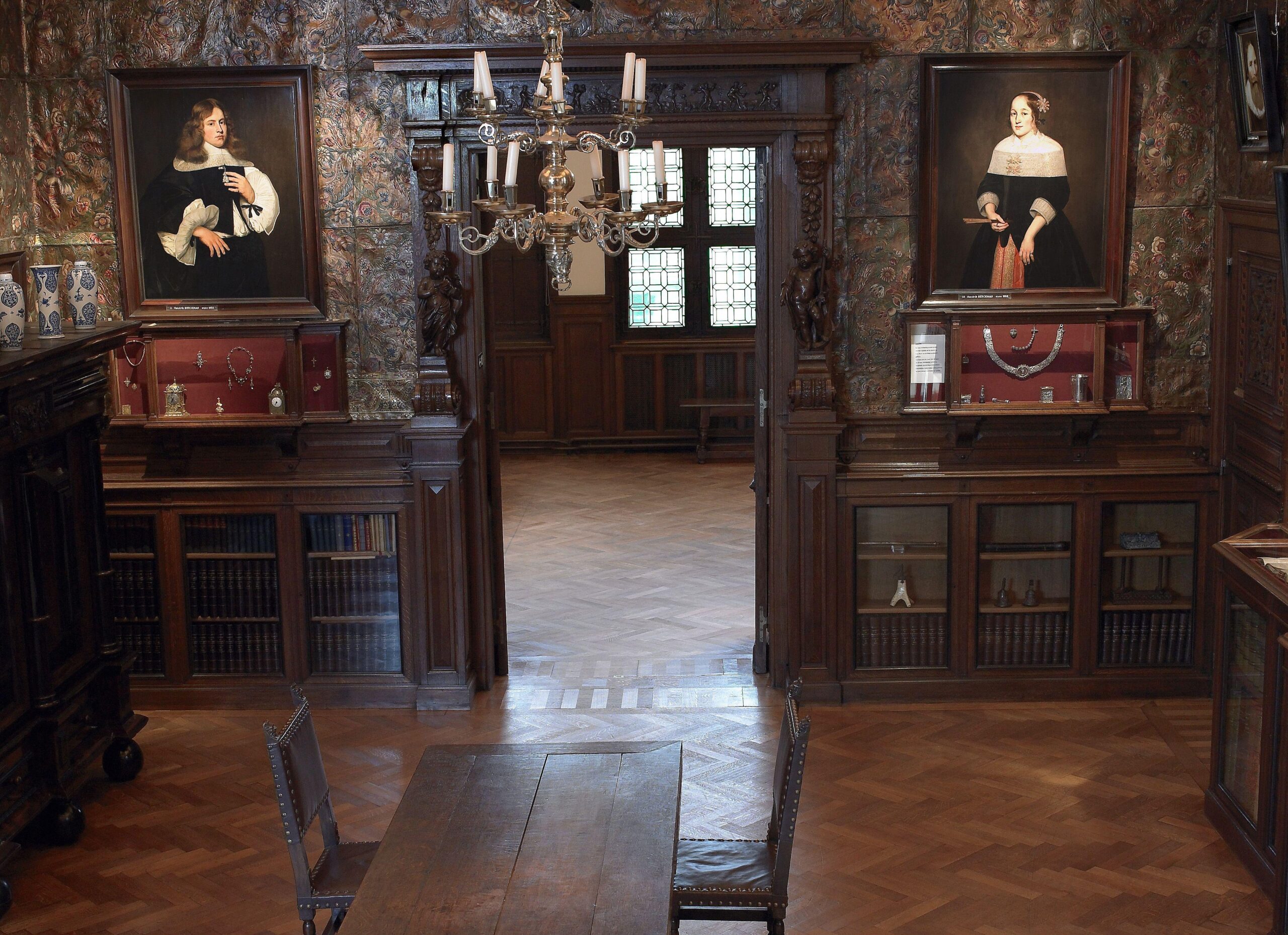
© Museum Mayer van den Bergh
Another major masterpiece is the 13th-century wood carving representing Jesus and John. The almost life-sized figures of Jesus and his beloved apostle John depict how one’s soul can attain unity in divine Love, if one is a follower of Christ. It is a mystical theme typical of the high Middle Ages, which often features in the devotional imagery of convents. The Swiss Dominican nuns for whom this Andachtsbild was intended, for example, saw themselves as the ‘brides of Christ’. The intimacy, comfort and faith conveyed by this sculpture with its almost androgynous, colourful figures, must surely have had an allegorical meaning.
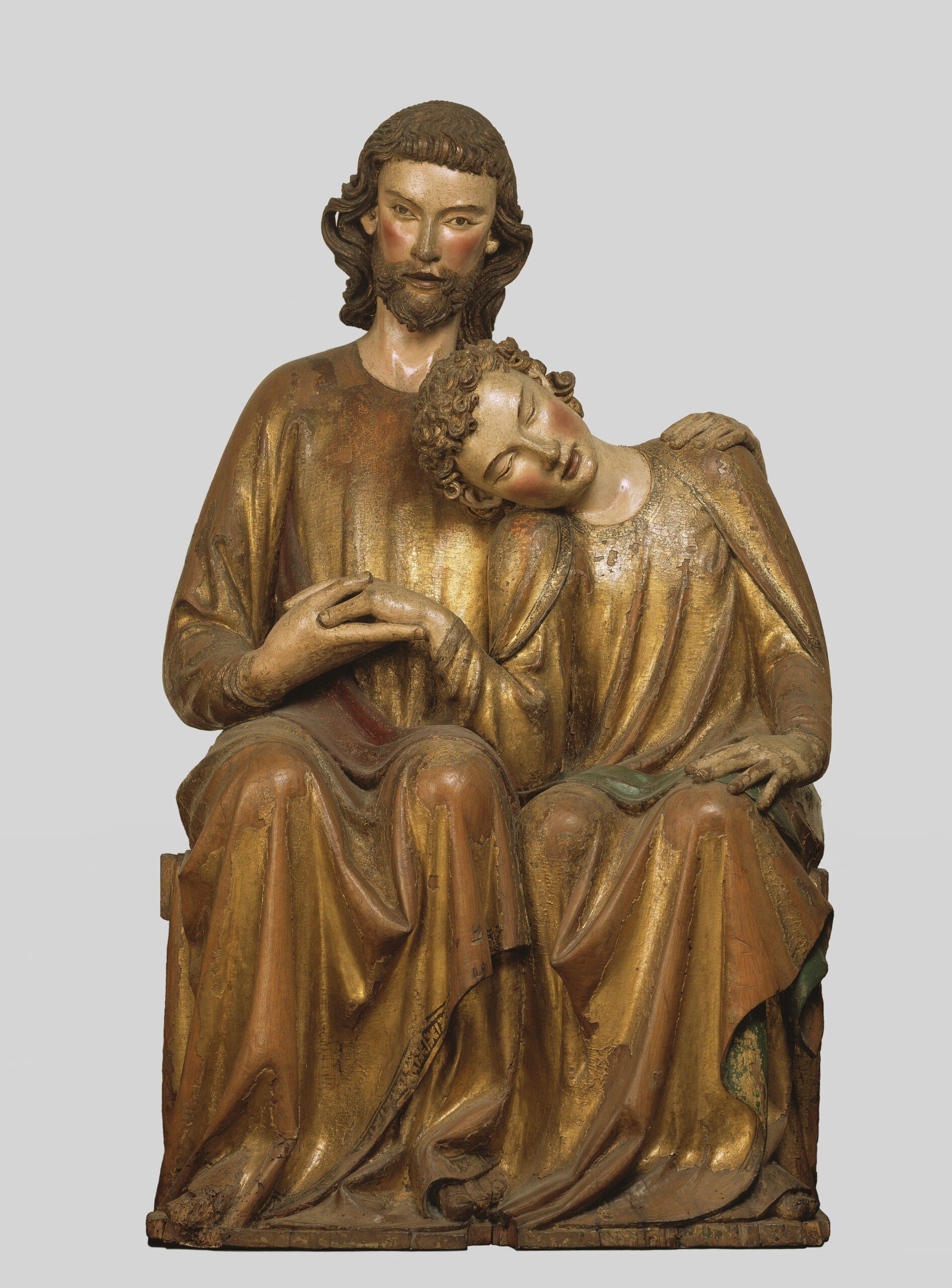 Heinrich von Konstanz, Christ and John, ca. 1280-1290
Heinrich von Konstanz, Christ and John, ca. 1280-1290© Museum Mayer van den Bergh
Another precious devotional object is a crib from the second half of the 15th century, in gilded oak. Unfortunately, the silver figurine of the infant Jesus that lay under the richly embroidered blanket has disappeared. A functional part of the Christmas devotion in nunneries, this beautiful and rare gilded crib sought to make the birth of Jesus tangible. In the Christmas season it was decorated and placed in the choir of the convent’s chapel or beguinage church. During the singing of Christmas carols, the religious women took turns to swing the cradle, which caused two silver bells to tinkle: an emotional ritual stimulating an emotional response to religious events.
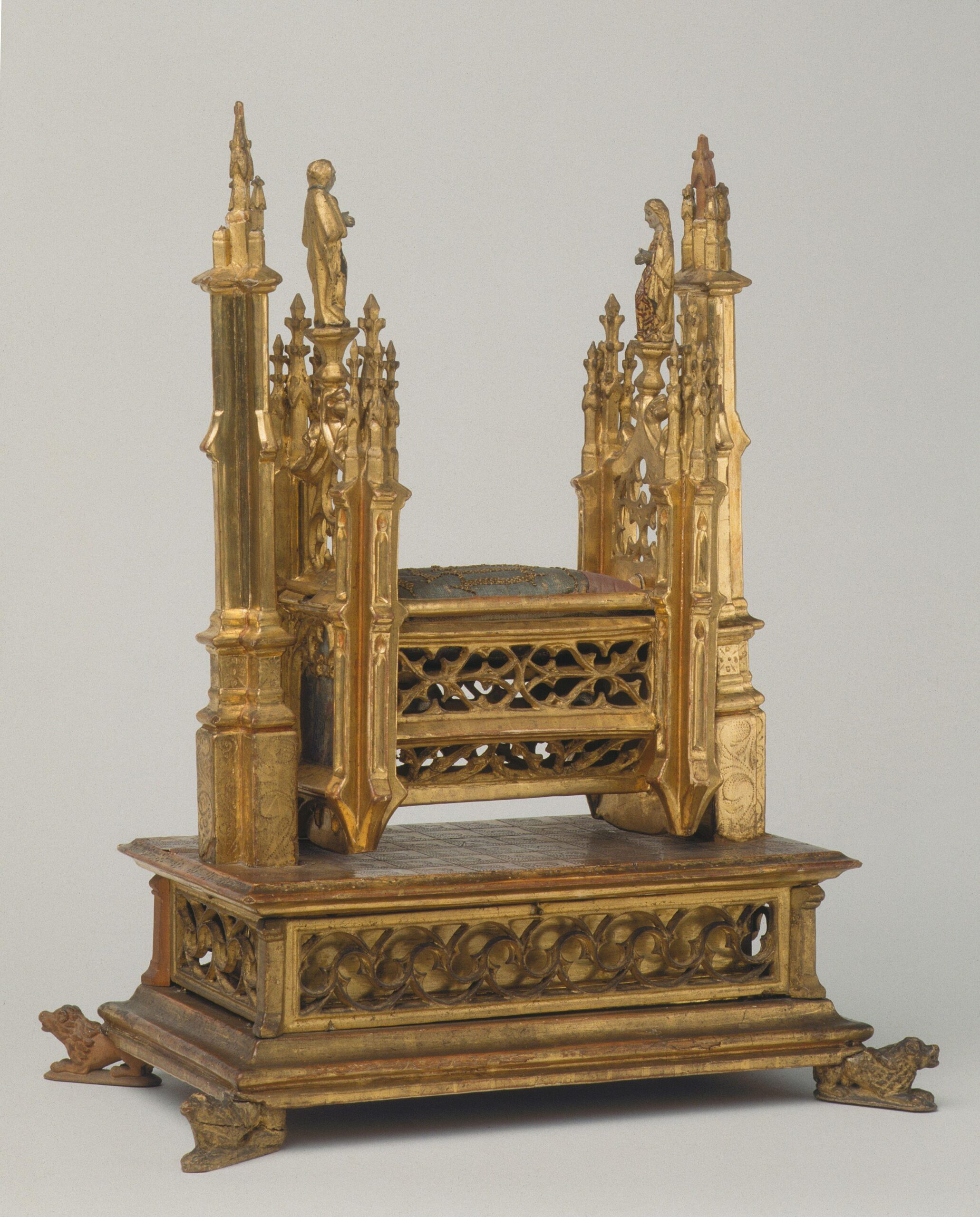 Anonymous, crib, ca. 1450-1499
Anonymous, crib, ca. 1450-1499© Museum Mayer van den Bergh
Fritz Mayer van den Bergh clearly had a vast appreciation for beauty in craftsmanship in very diverse forms. His close attention and knowledge of the so-called ‘Applied Arts’ – silverwork and jewellery, furniture, porcelain, textiles… makes him a forerunner of the contemporary interest in the Applied Arts. Some of the artefacts, such as the glass windows, are integrated in the museum interior. One of these bears the coat-of-arms of the Antwerp Chamber of Rhetoric de Violieren, with the motto ‘Uut jonsten versaemt’, meaning ‘gathered through affection’. While it sums up the members of the Chamber of Rhetoric, it equally epitomizes the knowledge and fondness in Mayer van den Bergh’s own collecting passion.


